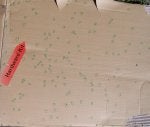Ok guys I need some help with real world results with steel 5 shot. I would appreciate ranges/speeds and payload size and results on birds of all sizes.
I have experience with slow experts with 6 and 7 shot used on mallards and teal on small warm ditches jump shooting and what happens from 10' to 25 yards but I have never shot 5 shot. I am looking at this in the 28 at only 5/8 oz payload at around 1450 fps. It will only give me about 155 pellets but my intent and hope is it will kill up to mallard sized birds out to 30 yards max! over the blocks and of course I am sure it will do well when I jump shoot the ditches. I know what the ballistic programs say but I am really looking for anyone who can share real world findings.
Thanks much :thumbsup:
I have experience with slow experts with 6 and 7 shot used on mallards and teal on small warm ditches jump shooting and what happens from 10' to 25 yards but I have never shot 5 shot. I am looking at this in the 28 at only 5/8 oz payload at around 1450 fps. It will only give me about 155 pellets but my intent and hope is it will kill up to mallard sized birds out to 30 yards max! over the blocks and of course I am sure it will do well when I jump shoot the ditches. I know what the ballistic programs say but I am really looking for anyone who can share real world findings.
Thanks much :thumbsup:









